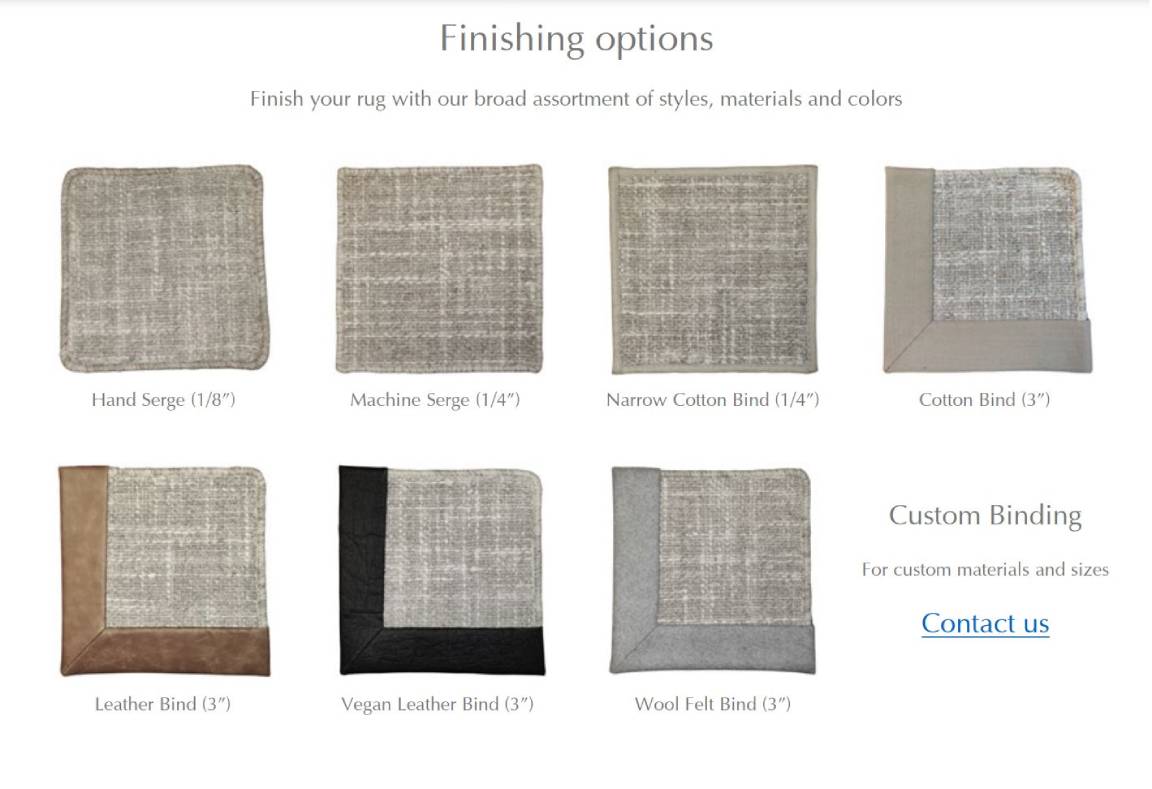In the realm of luxury interior design, the power of a well-chosen rug extends beyond mere aesthetics – it possesses the ability to redefine the perceived size of a room. Specifically, the impact of larger rug patterns on spatial perception is a nuanced art that demands careful consideration. Let us delve deep into the intricate dance between room size and rug patterns, exploring the transformative potential of designs. Join us on a journey to unlock the secrets of expanding space through artistry.
The Dynamics of Pattern Size:
The size of the pattern on a rug serves as a linchpin in the delicate balance of visual elements within a room. Patterns wield a complex influence, capable of both enchanting and challenging the observer.
 |
 |
- Large-scale patterns can visually "shrink" a room by dominating the space and drawing attention to the floor instead of the walls. This is particularly true for rooms with limited floor space. When strategically employed in larger rooms, they can create a captivating sense of drama and interest without overwhelming the environment.
- Small-scale patterns can create a sense of depth and expanse, making a small room feel larger and contributing to a sense of coziness. However, very small and intricate patterns should be carefully selected so that they do not create a cluttered look, negating the positive effect. In larger rooms, small-scale patterns can be strategically placed to complement specific areas, offering a touch of refinement and adding texture without overpowering the grandeur of the space.
The Play of Color:
Color, when combined with larger rug patterns, becomes a pivotal factor in orchestrating the perceived spatial dimensions.
- Light-colored rugs with large patterns can help to open up a space, counteracting the shrinking effect of the pattern that induces a sense of confinement.
- Dark-colored rugs with large patterns intensify the cozy ambiance but run the risk of making the room feel more enclosed.
- Light-colored rugs with smaller patterns when paired with light hues brighten up a space, creating an airy ambiance. In smaller spaces, they contribute to an expansive feel, enhancing the perception of size and luminosity.
- Dark-colored rugs with smaller patterns when strategically placed introduce warmth and texture, creating a snug atmosphere in smaller spaces. The intricacies of smaller patterns allow for a sense of refinement, maintaining a visual equilibrium within the room.

The interplay between color and pattern size is a delicate choreography, influencing the overall atmosphere of a space.
Strategic Rug Placement:
Strategic rug placement serves as a powerful tool for designers to amplify or mitigate the impact of both small and large patterns.
Large Room Large Patterns:
- Amplifying Impact: Place a generously sized rug with large patterns in the center of the room. This placement emphasizes the grandeur of both the room and the patterns, creating a captivating focal point. Ensure the furniture arrangement complements the expansive design, allowing the large patterns to unfold dramatically.

- Mitigating Impact: Opt for a placement where the generously sized rug with large patterns covers a substantial but not overwhelming portion of the floor. Position furniture around the edges of the rug to create a sense of definition and space. This helps maintain the openness of the large room while still showcasing the impact of the patterns.
Large Room Small Patterns:
- Amplifying Impact: Position a generously sized rug with small patterns to cover most of the floor. This creates a harmonious visual flow, enhancing the elegance of the room without overwhelming it. Allow the patterns to add subtle interest and texture to the expansive space.

- Mitigating Impact: Place the generously sized rug strategically to avoid overcrowding the room. Consider leaving some floor space bare to balance the impact of the small patterns, preventing them from dominating the visual landscape. This strategic placement maintains the sense of openness in the large room.
Small Room Large Patterns:
- Amplifying Impact: Opt for a smaller rug with large patterns strategically placed at the center of the room. This choice creates a bold focal point, drawing attention to the intricate designs. Ensure that the patterns become a defining feature, adding drama and interest to the limited space.

- Mitigating Impact: Choose a placement where the smaller rug with large patterns covers a significant but not overwhelming area. Place furniture along the edges of the rug to maintain an open feel in the small room. This strategic arrangement prevents the large patterns from making the room feel cramped.
Small Room, Small Patterns:
- Amplifying Impact: Place a smaller rug with small patterns at the center of the room to define the space and add subtle interest. This creates a cozy atmosphere without overpowering the limited dimensions. Ensure that the patterns contribute to a layered and refined design.

- Mitigating Impact: Opt for a placement where the smaller rug with small patterns covers just enough floor space to add texture without creating a cluttered look. Place furniture strategically to create the illusion of more room. This ensures the small patterns enhance the coziness without diminishing the perceived size of the small room.
The strategic placement of a larger or smaller patterned rug thus becomes a tool for interior designers to sculpt the spatial dynamics of a room.
Guidelines for Mastery:
For designers navigating smaller spaces, the emphasis should be on subtlety. Opt for solid-color rugs or those with intricate, small-scale patterns to maintain an open, uncluttered feel. Light colors become allies in this endeavor, brightening the space and creating an illusion of greater size.
In larger rooms, the canvas is more expansive, allowing for the introduction of larger rug patterns that inject drama and interest without compromising the sense of space.
That leaves us with medium-sized rooms, this middle ground provides fertile creative soil for designers to cultivate rooms rich in style and dimension. The key in medium-sized rooms is striking the right balance between making a statement and maintaining an airy feel. Here fuller coverage paired with mid-sized patterns and complementary furniture arrangements are ideal for both aesthetics and perceived spacing. Mid-scale patterns can infuse visual interest without overwhelming the space, and darker hues can create a richer, warmer atmosphere while still allowing the dimensions to breathe.
Conclusion:
In the intricate tapestry of luxury interior design, the impact of rug patterns on the perceived size of a room emerges as a central theme. The judicious selection and placement of these patterns possess the potential to transform spaces, creating a visual narrative that expands beyond physical constraints. As designers master the art of balancing pattern size, color, placement, and overall room design, they unlock the key to crafting environments that not only exude style but also redefine the very essence of spatial perception.




